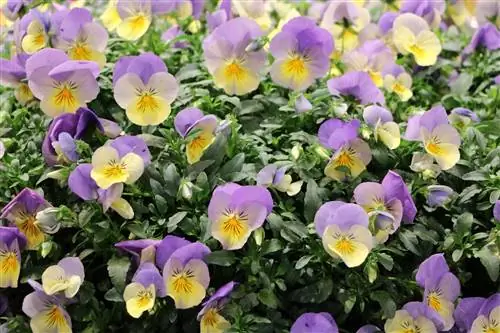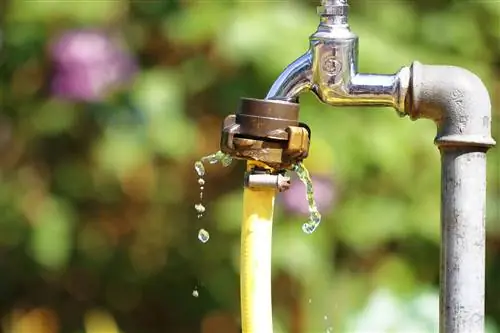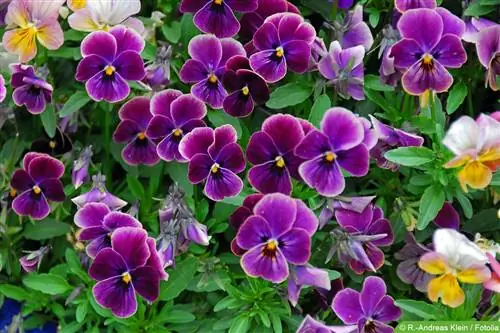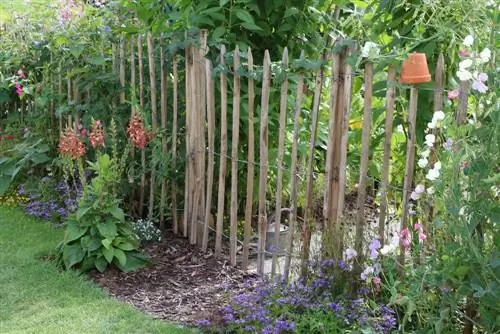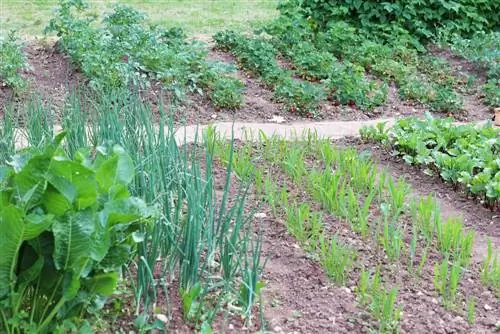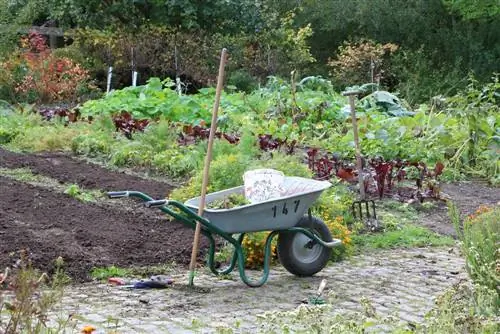- Author admin [email protected].
- Public 2023-12-17 03:39.
- Last modified 2025-01-24 12:45.
The violet was even called a sacred flower in ancient times. It was dedicated to the god named Pan. In addition, it was worn on the head in honor of Saturn in the form of a wreath of violets. It was also very popular as a remedy, so much so that even Hippocrates used it for many ailments. For example, against headaches, melancholy or visual problems. Nowadays, violets are mainly used in medicine to treat respiratory problems, such as bronchitis and coughs.
Suitable location for violets
If it gets too warm for the violet, it usually stops producing flowers. However, this is only the case if the thermometer permanently shows above 10 degrees. However, the abundance of flowers in spring is usually very consistent and certain. The violet is one of the garden plants that is not only easy to care for, but also very versatile. Basically, the violet prefers a partially shaded place. The soil should be nutrient-rich and loamy. March violets feel particularly at home under hedges. In addition, the soil should not be too dry or too hot, especially in summer. It is ideal if violets are combined with white-flowering dead nettles, lungwort or hostas. They then unfold their leaves after the violet has bloomed.
Location:
- partially shaded place is ideal
- March violets prefer a place under a hedge
- Soil must not be too hot or too dry in summer
- The combination with lungwort, dead nettles or hostas is ideal
The violet runners like to spread out into floor-covering carpets. It is all the more important to let them grow undisturbed. They should also not be hacked in these areas. The seeds also form pollination, namely in the bud. The seeds are spread, for example, by ants.
Care and fertilization
Violets prefer soil enriched with compost or leaf mold. This should be humus, well-drained and moist. You should plant the violet in autumn or spring. A distance of 20 cm between individual plants is ideal. As already mentioned, care is very straightforward. Offshoots that may become excessive should be removed regularly. This also ensures that the mother plant is sufficiently strengthened. The violet should be fertilized again in spring, ideally after flowering. For fertilizing you need a complete fertilizer. However, no further nutrient additions are necessary over the course of the year.
Care
- Enrich the soil with compost or leaf mold
- The violet should be planted in spring or autumn
- Distance between individual plants 20 cm
- Remove offshoots regularly
Fertilize
- fertilize in spring with complete fertilizer
- otherwise no nutrient additions are necessary
Propagation of garden violets
The violet is propagated by dividing the root balls. Best in spring or autumn. These young plants are then planted at a distance of 20 cm. However, self-sowing is also possible. However, it should be noted that young plants in particular must not dry out until they have grown. It is therefore important to water yourself regularly.
- Propagation occurs by dividing the root balls
- ideal time is spring or autumn
- self-sowing is also possible
- protect young plants from drying out
- water regularly
More tips from the editors
Snails are a serious enemy for the violet; they can eat away the young shoots. Snails should therefore be collected regularly. To prevent this, you should definitely use slug pellets.
As a rule, violets do not need a lot of water. However, growth can be accelerated by using a moist substrate. However, violets usually survive dry phases without any problems.
The violet also has the ability to be a so-called weather plant. In cold weather it turns blue and violet violets turn slate blue. For this reason, violets are often referred to as thermometers. However, they react to temperatures that are too cold by not producing flower buds.
The garden violet is also often used as an ornamental plant. That's why you can find peony violets, fragrant violets or pansies in many gardens.
Violets as medicinal plants
When used internally, violet is often used in the form of tea for bronchitis and coughs. It is also said to be very beneficial for colds with fever. However, it is rarely used in the area of nausea, although it contains active ingredients that can have a beneficial effect on the gastric mucosa. In addition, it has a relaxing and calming effect and can therefore also be used as a sleeping aid. On the other hand, it also has a relaxing and calming effect and can be used against constipation, as the violet leaves have a laxative effect.
Other uses
- March violet (Viola odorata) in particular is valued as a delicacy by connoisseurs. It is suitable for herb salads and can be candied.
- Expensive fragrance oils are also made from violets. Five tons of violets are needed for one liter of oil.
What you should know about garden violets in brief
- There are both annual and perennial varieties of violets, as well as subshrubs.
- Violets are among the first plants to delight with their beautiful colors after winter.
- Most only reach a height of up to 15 cm. Only a few varieties can grow up to 30 cm high.
- Violets are actually spring flowers. If you leave them in the garden, they usually bloom continuously and multiply.
- There are violets in an almost unlimited variety of colors, but they always go back to the basic colors white, violet, yellow and blue.
- The location of horned violets should be sunny. Other types of violets also get along with less sun.
- The plants prefer nutrient-rich and well-drained soil.
- Violets are pretty hardy. They get by with little water. They cope well with both wet and dry periods.
- Most species are frost hardy. The foliage remains even in winter.
- The plants are very frugal when it comes to nutrient consumption. Fertilization is not absolutely necessary.
- The main pests are cutworms. The traces of feeding are clearly visible. The plants wither away.
- Gray mold and mildew can also occur.

